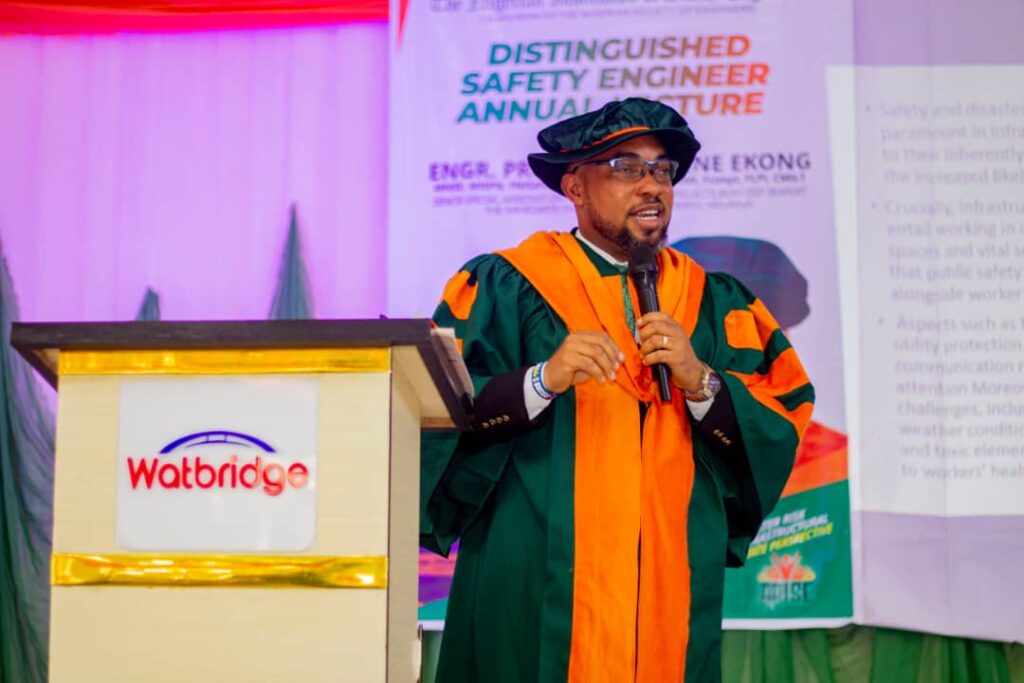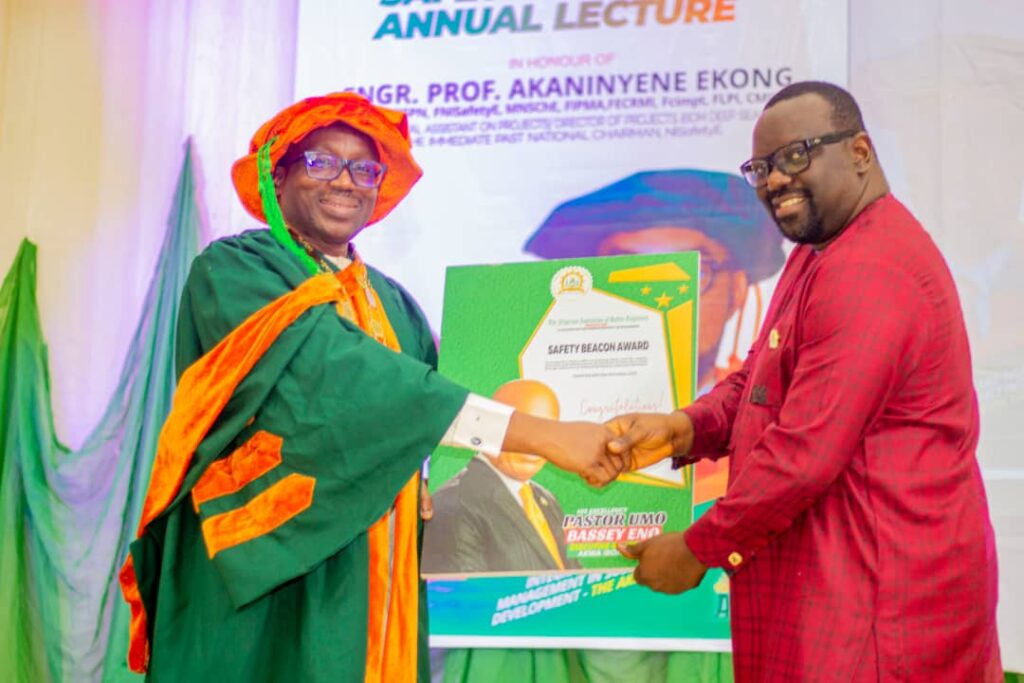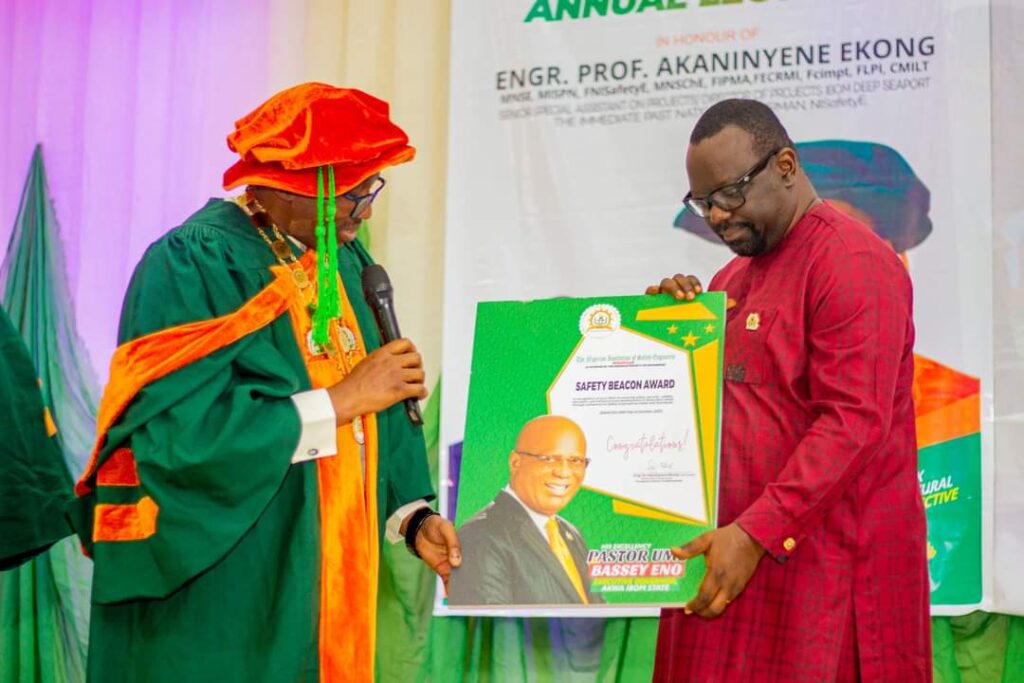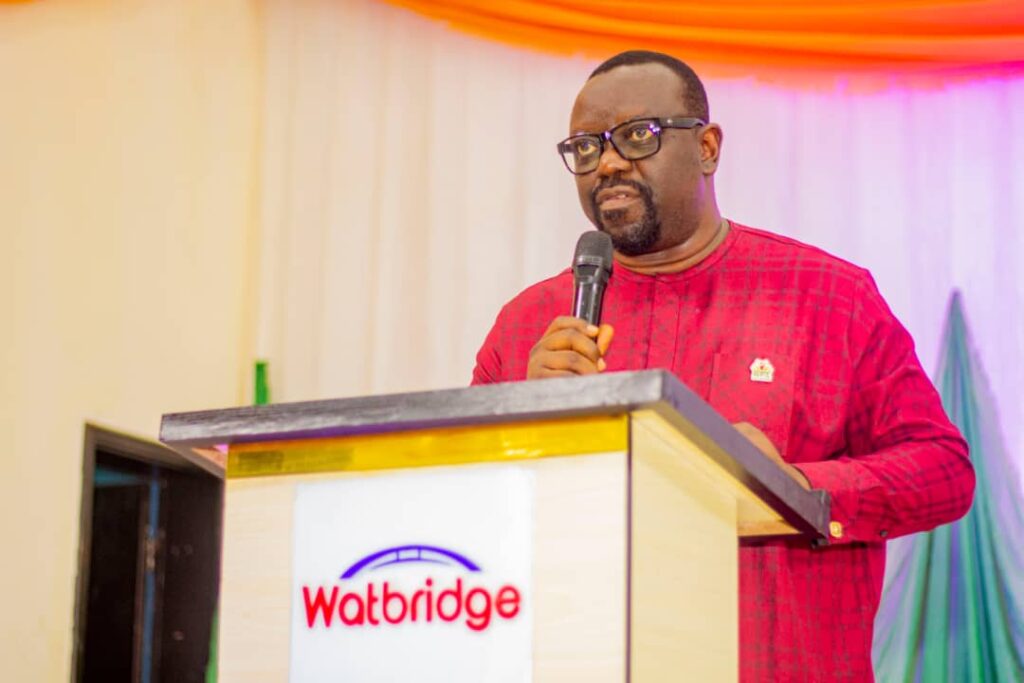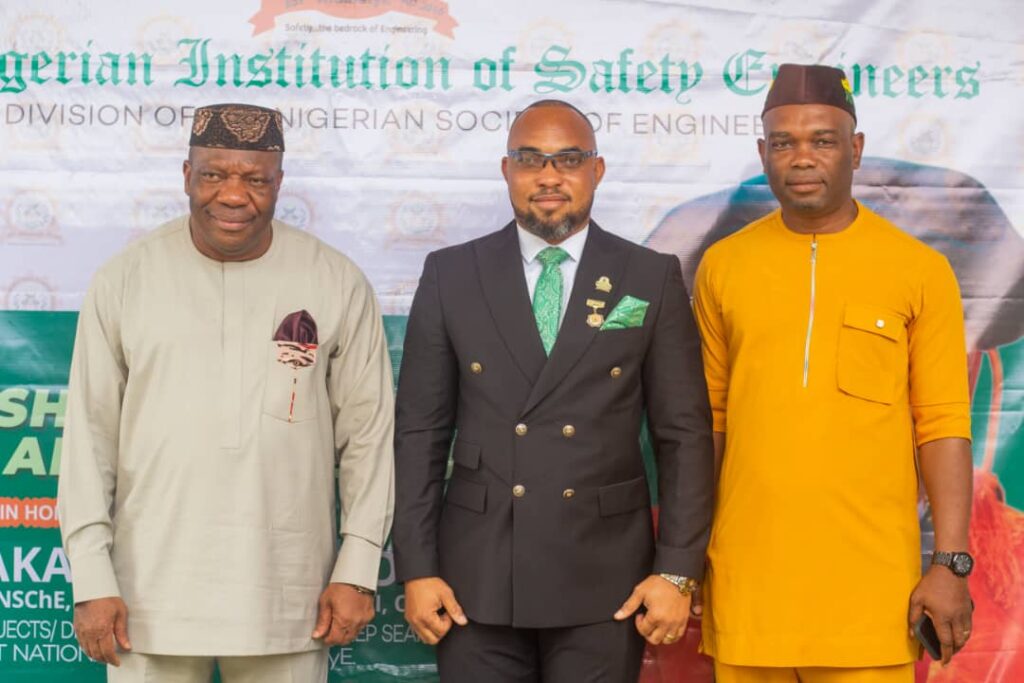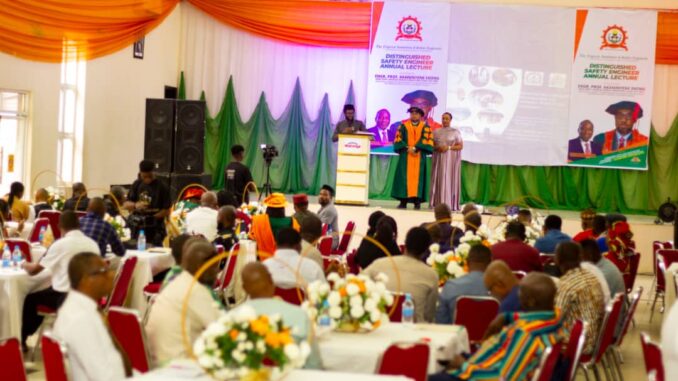
… As NisaftyE end 2024 distinguished safety engineer’s annual lecturers in his honour.
By Divine Sam
The Nigerian Institution of Safety Engineers (NISafetyE) recently held a pivotal event in Uyo, Akwa Ibom, to honor outgoing president Prof. Akaninyene Ekong. This gathering served as both the 2024 Distinguished Safety Engineer’s Annual Lecture and a celebration of Prof. Ekong’s substantial contributions to the field of safety engineering.
Engr. Chidozie Okereke, FNSE, FNISafetyE, chair of the central working committee, welcomed attendees, emphasizing the event’s dual purpose: to gain insights into safety engineering and to recognize Prof. Ekong’s leadership.
Prof. Ekong, a Project Operations Safety Advisor at ExxonMobil, is renowned for his visionary leadership and academic prowess, holding a PhD in Safety and Disaster Management. His impactful work in the oil and gas sector has earned both national and international recognition, particularly in safety practices.
Prof. Ekong’s advocacy has also been significant in Akwa Ibom, where he played a crucial role in establishing the Safety Commission and the Infrastructure Commission. As the founder of the Akwa Ibom State chapter of NISafetyE, he notably boosted membership and enhanced the organization’s national influence during his tenure.
The lecture, titled “Disaster Risk Management in Sustainable Infrastructural Development: The Akwa Ibom State Perspective,” aimed to provide practical strategies for integrating safety into infrastructure projects.
Prof. Ekong’s qualifications include a Bachelor of Engineering from the University of Uyo, an MBA, and two PhDs in Occupational Health and Safety and Environment and Disaster Management. He was the first Nigerian to hold a Professorial Chair in Safety & Disaster Management at Highstone Global University, USA. His extensive professional experience includes roles at Kingsor Engineering, Tafdev Construction Ltd, and ExxonMobil, contributing significantly to various projects. As National Chairman, he facilitated the development of Nigeria’s first National Safety Documents, significantly improving safety regulations.
Engr. Oluseun Faluyi, FNSE, FNISafetyE, the National Chairman, praised Prof. Ekong’s achievements and committed to upholding his legacy. Engr. Margaret Aina Oguntala, FNSE, FNISafetyE, President of the Nigerian Society of Engineers, urged continued intervention activities to enhance construction quality in Nigeria.
The event featured notable figures, including Dr. Vanessa Phala-Moyo, Country Director for the International Labour Organization, and Engr. Prof. Sadiq Zubair Abubakar, FNSE, FNISafetyE, President of COREN.
Lecture Highlights: Disaster Risk Management in Akwa Ibom
In his lecture, Prof. Ekong emphasized the critical importance of Disaster Risk Management (DRM) for sustainable infrastructural development, particularly in disaster-prone regions like Akwa Ibom State. He outlined several key components and strategies essential for effective DRM.
Context of Akwa Ibom State
Akwa Ibom, situated in Nigeria’s coastal southeastern region, faces risks such as flooding, erosion, and oil spills, all of which threaten infrastructure and disrupt socio-economic activities. Understanding these local challenges is vital for developing targeted DRM strategies.
Key Components of Disaster Risk Management
- Risk Assessment
- Conduct comprehensive risk assessments to identify vulnerable areas and populations.
- Use geographic information systems (GIS) to map hazards and assess infrastructure vulnerabilities.
- Planning and Policy Integration
- Incorporate DRM into urban and regional planning.
- Develop policies that prioritize sustainable construction practices and resource management.
- Infrastructure Resilience
- Design infrastructure to withstand natural disasters, such as flood-resistant roads and buildings.
- Invest in green infrastructure to enhance natural disaster buffers.
- Community Engagement
- Involve local communities in DRM planning and implementation.
- Educate residents about risks and promote preparedness initiatives.
- Monitoring and Evaluation
- Create systems to monitor the effectiveness of DRM strategies.
- Adapt plans based on lessons learned from past disasters and environmental changes.
Sustainable Development Goals (SDGs) Alignment
Effective DRM contributes to several SDGs, particularly Goal 11 (Sustainable Cities and Communities) and Goal 13 (Climate Action), enabling Akwa Ibom to achieve sustainable development outcomes.
Challenges and Opportunities
- Challenges
- Limited funding and resources for implementing DRM initiatives.
- Insufficient data on hazards and vulnerabilities.
- Need for stronger coordination among government agencies and stakeholders.
- Opportunities
- Leverage partnerships with international organizations for technical and financial support.
- Utilize technology and innovation for improved disaster forecasting and response.
Prof. Ekong concluded that adopting a comprehensive approach to DRM—integrating risk assessment, community engagement, and resilience-building measures—is essential for mitigating disaster impacts and fostering sustainable development in Akwa Ibom State. This occasion not only celebrated Prof. Ekong’s leadership but also served as a platform for advancing safety engineering practices in Nigeria, encouraging active engagement among attendees to enhance infrastructure safety and resilience.
